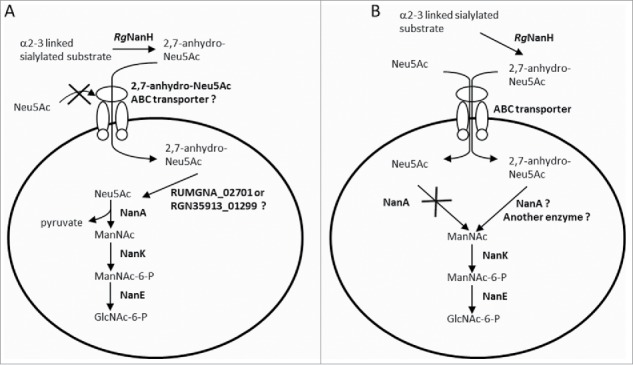Figure 5.

Proposed pathways for the catabolism of sialic acid in R. gnavus ATCC 29149 and ATCC 35913. RgNanH releases 2,7-anhydro-Neu5Ac from α2–3 linked sialylated substrates. (A) It can be hypothesized that 2,7-anhydro-Neu5Ac is transported inside the bacterium via a 2,7-anhydro-Neu5Ac-specific ABC transporter composed of a solute-binding protein (RUMGNA_02698 in ATCC 29149;RGNV35913_01296 in ATCC 35913) and two putative permeases (RUMGNA_02697 and RUMGNA_02696 in ATCC 29149; RGNV35913_01295 and RGNV35913_01294 in ATCC 35913) and then hydrolyzed into Neu5Ac, possibly by the action of RUMGNA_02701 or RGNV35913_01299, before being catabolized into GlcNAc-6-P following the traditional pathway by the successive action of NanA (Neu5Ac lyase), NanK (ManNAc kinase) and NanE (ManNAc-6-P epimerase). (B) Alternatively, both 2,7-anhydro-Neu5Ac and Neu5Ac could enter the cells via the ABC transporter but NanA would either be inactive or specific for 2,7-anhydro-Neu5Ac, explaining the absence of growth of the bacteria on sialic acid.
